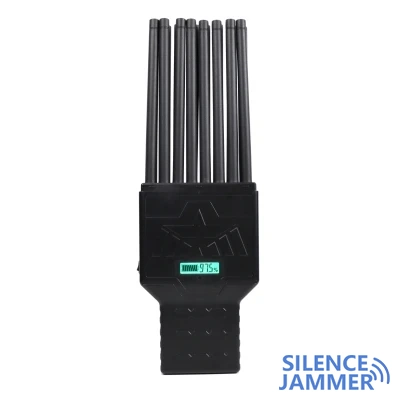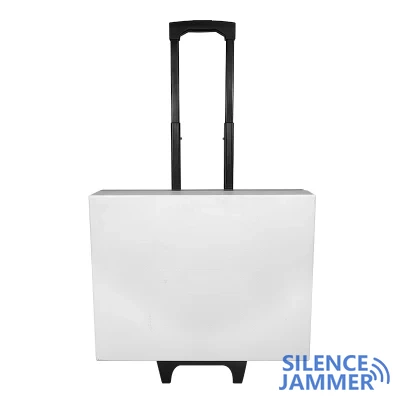The working principle of the mobile phone signal jammer device is that in the cellular mobile communication system, the system coverage area is divided into several cellular areas. The base station of each cell is equipped with a low-power transmitter, and its transmitted signal is only within the limited area of the cell. If the signal emitted by the base station is interfered by electromagnetic waves of a certain intensity at the same frequency, the communication will not proceed normally.
The shield is designed based on the principle of co-frequency interference. The base station and the mobile phone are connected through electromagnetic wave signals in the specified frequency band. The signal sent by the base station to the mobile phone is a downlink signal, and the signal sent by the mobile phone to the base station is an uplink signal. The uplink and downlink signals use different frequency bands. The jammer blocks downlink signals, that is, the jammer sends signals on the same frequency as the base station to the mobile phone, and the mobile phone receives the signals from the jammer and the base station at the same time. As long as the signal from the jammer is larger than the base station signal, the mobile phone cannot recognize the base station signal and displays no signal.

Base station downlink signal strength
For example, the strength of the strongest signal of a set of downlink signals transmitted by a base station is -65dBm (taking GSM as an example), which can be measured by a mobile phone or spectrum analyzer. And we can simultaneously send an interference signal that the base station cannot recognize on the frequency range 930 to 960. Then the mobile phones in this frequency band in this area cannot hear any signals sent by the base station to the mobile phones, and the mobile phones cannot establish communication with the base station. Without contact, it is impossible to achieve effective communication, and our purpose is achieved.




